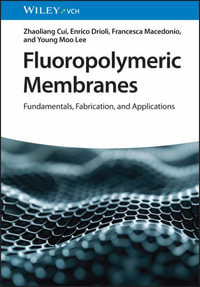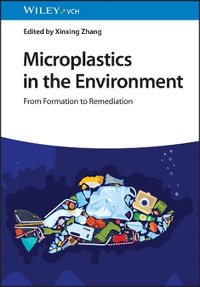| Preface | p. ix |
| Oxides and Phosphates | p. 1 |
| Surfaces and Modified Surfaces | p. 3 |
| Chemistry on Organofunctionalized Amorphous Oxides Surfaces | p. 5 |
| Introduction | p. 5 |
| Modified amorphous oxide surfaces as metal cation sequestrating agents | p. 8 |
| Organofunctionalized metal-modified surfaces for chromatographic applications | p. 8 |
| Modified amorphous oxides for luminescent devices | p. 9 |
| A 3-trimethoxypropylthioethylamine-modified surface | p. 9 |
| In situ synthesis of luminescent complexes on amorphous modified silica surfaces | p. 12 |
| Modified amorphous oxide surfaces as electrochemical sensors | p. 20 |
| Metal cation electrochemical sensors | p. 20 |
| Paracetamol sensors | p. 20 |
| Chemically modified oxide surfaces capable of molecular recognition | p. 24 |
| The influence of magnesium trisilicate and silicon dioxide on the thermal degradation of ascorbic acid | p. 24 |
| References | p. 31 |
| Chemistry on Organofunctionalized Nanostructured Oxides' Surfaces | p. 33 |
| Introduction | p. 33 |
| Inorganic-organic hybrids | p. 34 |
| Sol-gel lamellar silica | p. 34 |
| Eu(ii)-doped lamellar silica | p. 35 |
| Titania foam and thiol-functionalized nanoporous titania-silica | p. 38 |
| Thiol-functionalized nanoporous titania-silica | p. 38 |
| Titania foam | p. 40 |
| The effects of nanostructure on adsorption features: metal chemisorption on hexagonal templated zirconia obtained thorough sol-gel process | p. 41 |
| Surface modifications promoted by not bonded species | p. 45 |
| Effects of metal salts, DMF, and DMSO on the anatase-rutile transition in sol-gel-synthesized TiO2 | p. 45 |
| Hexagonal mesoporous silica | p. 48 |
| References | p. 49 |
| Chemistry on Conducting Polymer-Modified Oxide Surfaces | p. 51 |
| Introduction | p. 51 |
| Synthetic approach | p. 51 |
| Effects of adsorbed conducting polymer on the oxide properties | p. 52 |
| Effects of the oxide on the adsorbed polymer properties | p. 52 |
| References | p. 56 |
| Chemistry on Modified Layered Oxides | p. 57 |
| Introduction | p. 57 |
| Titanates and niobates | p. 57 |
| Tungstates and molybdates | p. 58 |
| Molybdenum oxide as a molecular sieve | p. 62 |
| MoO3 intercalation compounds with nic and hmta | p. 62 |
| Adsorption of caffeine, dimethylglyoxime, and rodamin-B on lamellar molybdenum oxide | p. 68 |
| Sol-gel modified molybdenum oxide | p. 72 |
| Graphite oxide | p. 77 |
| References | p. 78 |
| Chemistry on Modified Phosphates | p. 79 |
| Introduction | p. 79 |
| Titanium and zirconium phosphates | p. 79 |
| Vanadyl phosphate | p. 80 |
| Synthesis and characterization of a VOPO4-NH3 hybrid | p. 80 |
| More vanadyl phosphate compounds | p. 83 |
| Barium and calcium phosphate | p. 84 |
| Adsorption of glycine on "animal" (bone) phosphate | p. 84 |
| Introduction | p. 84 |
| Experimental | p. 84 |
| Results and discussion | p. 85 |
| A final example | p. 89 |
| References | p. 89 |
| Chemistry on Modified Clay Surfaces | p. 91 |
| Introduction | p. 91 |
| Vermiculite surface modified with carnauba wax for oil cleaning | p. 91 |
| Water as a surface modifier: the hydrophobicity of vermiculite | p. 95 |
| The effect of surface chemical composition on the acide corrosion of pedra sabão (soapstone) | p. 98 |
| Thermal degradation of vegetable oils on clays (biodiesel production) | p. 103 |
| Introduction | p. 103 |
| Miscellaneous examples | p. 106 |
| References | p. 107 |
| Zeolites | p. 109 |
| Introduction | p. 109 |
| Some examples and applications | p. 110 |
| References | p. 112 |
| Further Reading | p. 113 |
| Subject Index | p. 199 |
| Table of Contents provided by Ingram. All Rights Reserved. |
























